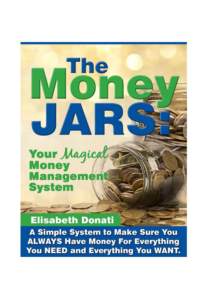It seems, these days, that companies and nonprofit organizations are more focused on taking curriculums and lessons online…including the much needed financial literacy curriculums we’re all convinced need to be incorporated into every school program. Maybe it makes sense to provide some education virtually these days. But financial education will always be more effective when it’s taught in real life situations first and simulation-type situations second.
The Problem with Virtual Financial Education
I can see a group of corporate financial people sitting around a conference room having this conversation…
“So, Bob, what do you think we ought to do to to help solve the financial illiteracy problem these days?”
“I don’t know, Jill, it seems like all the kids are online these days. We should probably build an online game or something. What do you think, Ted?”
“Sounds good to me. I mean…we have to spend our donation money somehow. Heck, maybe the kids will learn something and the parents will to be so impressed with what we’re doing that they’ll think of US when it comes to buying their financial products.”
“Ted, I love it. When do we get started?” asks Jill, while Bob and the rest (who sit back and sip their coffee) have no clue how to actually teach kids and teens about real money and real investing.
At least that’s how I envision it. And why do I envision it this way? Because this morning I got yet another email announcing another online financial “world” from a big financial institution and well, I just couldn’t take it anymore.
AND, because after nine long years of teaching kids and teens about money (and adults I might add), I know a thing or two about what it takes to drive the lessons home with the kids and it’s NOT another online financial education program. It’s real world experience with real world money first…then simulated world experience with play money second.
Like almost everything in life, learning how to use and invest money takes lots of practice. It takes making great decisions and making some really dumb ones, too. It takes learning about the emotions behind our spending and our general use of the money. It takes a ton of education in terms of how to invest in assets that produce cash flow and, more than anything else, it takes years of developing the right financial thoughts, beliefs and attitudes about money along with the right financial habits. This is…if you ever want kids to grow up to be financial savvy adults.
I had a meeting with the local Santa Barbara County Education Curriculum Person (don’t know her official title) and she asked me, “What grade should financial education be taught in?”
“Every grade!” (I may have raised my voice!)
It gets back to the practice thing. We can’t throw financial education into a 10th grade math class for 9 weeks and expect these kids to be able to take the information and develop any life long habits from that experience. No, nine weeks later, when they’re learning the next thing they’re going to be tested on for the umpteenth time, they won’t remember that you need to “Save Early and Save Often” or “Spend Less Money Than You Make And Invest The Difference”.
Why? For the same reason they wouldn’t remember how to write if they didn’t keep taking writing or math if they didn’t keep taking math.
But the REAL challenge with financial education programs is best stated with an analogy: it’s like teaching a kid how to hit a golf ball without providing the ball, the golf club, the golf course or the rules to the game. There is just no way you can learn without going out there and hitting 1000’s of balls down that fairway.
So what type of financial education DOES work?
Two types of financial education work well, and they work best when used together:
1) Practical education where the kids get to experience money in the real world.
This could be an allowance as well as (in addition to) encouraging your kids to make their own money (I didn’t say get a job…I said MAKE their own money and they do this by creating little businesses) in order to practice with their money and your money.
Note: They’ll often spend their money a lot more carefully than yours!
In The Ultimate Allowance, I show parents how to systematically take the money they already spend ON their children and run it THROUGH their children instead so the kids get the chance to practice with money. They get to make mistakes with it, make great decisions with it, learn to invest it…just learn all about it. And why does this allowance method work? Because kids are put in charge, i.e., made responsible, for all the things they need and want and they have to figure it out themselves (with the parent’s guidance of course).
2) Simulation-type education where kids get to experience the world of money and investing using play money, play paychecks, play expenses, play events, etc.
This type of financial education curriculum is great for introducing financial lessons and concepts to kids in an environment where they get to learn and practice what adults have to do BUT they get to do it in a space that is safe and full of opportunities to ‘learn by doing’ without the pain attached.
This is what The Money Game is all about. The Money Game provides a safe, fun, interactive, simulation-type environment full of lessons that are conceptual but easy to understand. We like to say “the room is the board, the players are the pieces and the lessons last a lifetime”.
Jr. Achievement in Los Angeles has a great program also, called Finance Park. Kids arrive in large groups, are given a fictitious job with a salary and family already intact. They have to learn how to maneuver the world of money in a fast-paced simulation with store fronts and desks and bank accounts and more. The only challenge with Jr. Achievement’s program is that you have to get the kids there…the program isn’t portable.
So what can you do?
Well, by all means, if you’re set on letting your kids be on the computer, get them the financial education games that are available online. (As a side note, though, please read “The Shallows: What The Internet Is Doing To Our Brains” so you know what’s happening physiologically to all of us when we use the computer too much in the wrong way.)
Next, make sure your kids and students get to learn about money and investing in a way that really works (like The Money Game). I call this method of education “sticky” because the information gets locked into their cells and they have a better chance at remembering the information so they can start using it now and into their futures.
Check out local programs that offer financial camps and entrepreneurial camps. Even though our Camp Millionaire isn’t offered everywhere, there are plenty of community colleges, extension programs and other organizations offering money camps around the US. Google financial camps, money camps, personal finance camps and summer money programs to find out what’s in your area.
Encourage your child’s teachers, principal, and anyone else who will listen, to implement an activity-based, experiential, simulation-type financial curriculum that will give your child a fighting chance of learning about money before they move out on their own.
And here’s an idea…learn how to teach The Money Game to your own kids and their friends and neighbors and you’ll be the newest cool mom or dad or aunt or uncle or grandpa or grandma on the block. Kids of all ages love playing The Money Game and if you have a few lessons you want to toss in of your own? By all means, toss them in.
You do NOT want to have to experience your 20-year old moving home because he has made a financial mess out of his life early on. This is just a painful situation for everyone involved and is avoidable…but we have to take the necessary steps to teach our kids while they’re young.
And then, if you have kids and you’re reading this, do them the honor of giving them tens of thousands of dollars of practice before they move out. The Ultimate Allowance shows you how to do it. And here are three chapters to get you started!
I hope this helps you teach the children in your world how to grow up financially responsible and savvy. Keep me posted and please, add your comment to the end of this article.
Enjoy…
To subscribe to this blog, just click here. Once or twice a week, you’ll receive my musings about financial education for kids and teens (and us big kids, too)! Please know that sometimes my ideas will invite you to think differently about money:-).




Somehow this information ought to be given to children as part of a regular curriculum given it’s the cornerstone, keystone and foundation of their future lives and the level of personal freedom they get to live at.
Elisabeth brings the message home in her camp, in her book and somehow, someway, this should be delivered at a national level….
Peter
Thanks Peter!